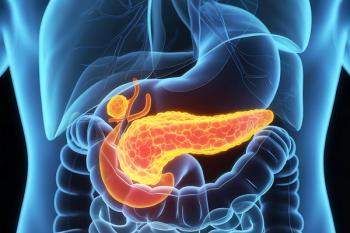
- The Application Notebook-07-01-2017
- Volume 30
- Issue 2
The Rapid Determination of Mycotoxins by LC–MS/MS
Mycotoxins are secondary metabolites produced by several species of fungi and are considered one of the most significant contaminants of agricultural commodities, both in the field and in storage. Agricultural products that may be affected include cereals, spices, dried fruits, and various nuts. Although hundreds of mycotoxins are known, relatively few are considered to pose a significant health risk. Aflatoxins, in particular aflatoxin B1, are genotoxic and carcinogenic and may cause liver cancer in humans, whilst ochratoxin A and the trichothecenes HT-2 and T-2 can cause various toxic effects. Monitoring and control of certain mycotoxins is important within the food industry because of their potential toxicity at low levels to both humans and animals.
Advanced Chromatography Technologies
Mycotoxins are secondary metabolites produced by several species of fungi and are considered one of the most significant contaminants of agricultural commodities, both in the field and in storage. Agricultural products that may be affected include cereals, spices, dried fruits, and various nuts. Although hundreds of mycotoxins are known, relatively few are considered to pose a significant health risk. Aflatoxins, in particular aflatoxin B1, are genotoxic and carcinogenic and may cause liver cancer in humans, whilst ochratoxin A and the trichothecenes HT-2 and T-2 can cause various toxic effects. Monitoring and control of certain mycotoxins is important within the food industry because of their potential toxicity at low levels to both humans and animals.
As demonstrated in Figure 1, the separation and identification of seven of the most concerning mycotoxins from a food safety perspective (including the structurally similar aflatoxins) can be achieved using an ACE Excel 2 C18-AR column in less than 5 min. The ACE C18-AR is a novel C18-based phase with enhanced aromatic selectivity. The combination of C18 and aromatic selectivities offers an ideal solution for the separation of mycotoxins. The C18-AR is suitable for a wide range of analytes, including those able to π–π bond, analytes with different dipole moments, those containing electron withdrawing groups (such as halogens, nitro groups, ketones, esters, and acids), analytes with differing hydrophobicity, uncharged acids and bases, and polar to nonpolar analytes. The low bleed characteristic of this phase makes it ideal for use with tandem mass spectrometry (MS) detection, permitting low level detection and identification of these key components.
ACE C18-AR is one of a range of novel selectivities specially engineered by Advanced Chromatography Technologies Limited to provide chromatographers with more choices for alternative selectivity, without compromising stability or robustness. Whilst the ACE C18-AR combines the hydrophobic characteristics of a C18 phase with the aromatic selectivity of a phenyl phase, the ACE C18-PFP combines the hydrophobicity of a C18 phase with the alternative selectivity offered by a pentafluorophenyl phase. This provides π–π, dipole–dipole, and shape selectivity mechanisms in addition to hydrophobic separation mechanisms. Other phases in the ACE range include the ACE C18-Amide and the ACE CN-ES, both offering alternative selectivity and especially recommended for improved retention of polar compounds. In addition, the ACE SuperC18 phase offers extreme inertness and excellent stability across a wide pH range of 1–11, and a new range of novel hydrophilic interaction liquid chromatography (HILIC) selectivities offers a route to systematic and successful HILIC method development. A wide range of application notes are available in a series of LC and LC–MS application guides published by Advanced Chromatography Technologies. Contact us for your free copies.
Advanced Chromatography Technologies
1 Berry Street, Aberdeen, Scotland, UK
E-mail:
Articles in this issue
over 8 years ago
Determination of Sophisticated Honey Adulteration with LC–IRMSover 8 years ago
Direct Analysis of Amino Acids by HILIC–ESI-MSover 8 years ago
On-Line MALS-QELS (Quasi‑Elastic Light Scattering)over 8 years ago
Ensuring Protein Reagent Quality by SEC-MALSNewsletter
Join the global community of analytical scientists who trust LCGC for insights on the latest techniques, trends, and expert solutions in chromatography.





